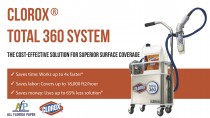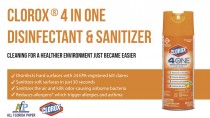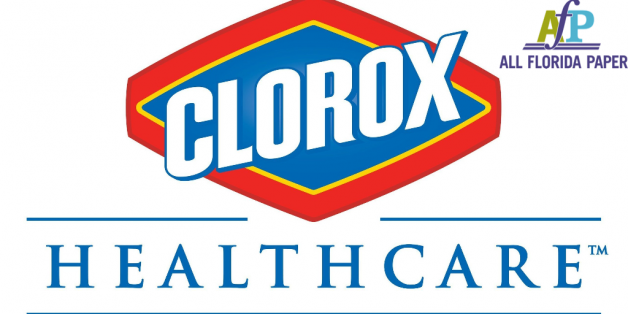In healthcare facilities, cleaning and disinfecting surfaces is essential for reducing the risk of healthcare-associated infections (HAIs). Surfaces, equipment and medical devices found throughout the environment are prone to contamination with healthcare-associated pathogens, many of which can survive on surfaces for prolonged periods and contribute to transmission. Ensuring thorough cleaning and disinfection protocols is vital to an effective infection prevention strategy, as well as having the right disinfectants for the job. Product options have expanded and evolved over time to better suit the needs of a changing healthcare environment and to achieve a balance between two key priorities for disinfection: efficacy and surface compatibility.
Disinfecting Efficacy & Surface Compatibility
 The five most common HAIs cost the U.S. healthcare system nearly $10 billion per year, with Clostridium difficile (C. difficile) infections alone accounting for 15.4 percent of total costs.[i] As healthcare facilities work to reduce HAIs, they must also consider surface compatibility, a disinfectants’ suitability for use on specific surfaces and equipment. All surface disinfectants can cause compatibility issues if used improperly, potentially leading to financial and safety impacts. According to an ECRI Institute report on health technology hazards, “use of cleaning agents or cleaning practices that are incompatible with the materials used in a medical device’s construction, or that are otherwise inappropriate for the device’s design, can cause the device to malfunction or to fail prematurely, possibly affecting patient care.”[ii] Aesthetic issues related to compatibility, like residue, also play an important role in perceived cleanliness, especially among patients.
The five most common HAIs cost the U.S. healthcare system nearly $10 billion per year, with Clostridium difficile (C. difficile) infections alone accounting for 15.4 percent of total costs.[i] As healthcare facilities work to reduce HAIs, they must also consider surface compatibility, a disinfectants’ suitability for use on specific surfaces and equipment. All surface disinfectants can cause compatibility issues if used improperly, potentially leading to financial and safety impacts. According to an ECRI Institute report on health technology hazards, “use of cleaning agents or cleaning practices that are incompatible with the materials used in a medical device’s construction, or that are otherwise inappropriate for the device’s design, can cause the device to malfunction or to fail prematurely, possibly affecting patient care.”[ii] Aesthetic issues related to compatibility, like residue, also play an important role in perceived cleanliness, especially among patients.
To minimize compatibility issues, facilities may feel pressure to make risky trade-offs between disinfectants with broad-spectrum efficacy that kill dangerous pathogens, and gentler products with fewer kill claims but better aesthetics. For example, hospitals might trade down from a sporicidal product to a quaternary ammonium formula, which could leave patients, hospital staff, and visitors vulnerable to dangerous bacteria like C. difficile.
However, achieving effective disinfection, while minimizing compatibility issues like residue and corrosion, is possible when the right products are selected and used appropriately.
Selecting the Right Disinfectant
 So how can healthcare facilities eliminate the need for trade-offs? There are a few guiding principles to ensure the disinfectant selected for use is effective in eliminating pathogens while preserving the materials cleaned.
So how can healthcare facilities eliminate the need for trade-offs? There are a few guiding principles to ensure the disinfectant selected for use is effective in eliminating pathogens while preserving the materials cleaned.
Starting with efficacy, disinfectants should have a wide antimicrobial spectrum, including kill claims for the pathogens that commonly cause HAIs. Sporicidal disinfectants typically have the best efficacy. Second, regarding compatibility, there are now products with broad surface compatibility that are specially formulated for surfaces commonly found in healthcare settings. Some manufacturers can help facilities address surface compatibility proactively. For example, through the Clorox Healthcare Compatible™ program, Clorox Healthcare works with medical equipment manufacturers to evaluate and test compatibility across its portfolio of disinfectants on common surfaces and equipment. Third, products with short contact times (e.g., 30 seconds – three minutes) facilitate faster room turnover and greater compliance. When products are easy to use, there is less chance for error. Ideal products clean and disinfect in one step and are available in ready-to use form.
Because the threat posed by HAIs extends far beyond patient rooms, routine cleaning and disinfection is necessary to ensure patient safety in every healthcare setting. Achieving a balance between efficacy and compatibility is possible, but requires a holistic view of facility maintenance and careful consideration of surfaces and materials, as well as the products used to clean and disinfect them. With prudent purchasing and consistent, compliant use, healthcare facilities can avoid risky trade-offs and preserve vital medical equipment and surfaces.
[i] Zimlichman, E et al. “Health Care-Associated Infections: A Meta-Analysis of Costs and Financial Impact on the US Health Care System.” JAMA Internal Medicine 173.22 (2013): 2039–2046. Web.
[ii] “Top 10 Health Technology Hazards for 2017.” ECRI Institute. Accessed Mar. 1, 2017.
Building on a century-long legacy in cleaning and disinfecting, Clorox Healthcare offers a wide range of solutions to help stop the spread of infection in healthcare facilities. From comprehensive surface disinfection, including advanced ultraviolet technology, to skin antisepsis, we are committed to providing efficacious solutions, designed for compliance, to safeguard patient environments. For more information, visit www.cloroxhealthcare.com or follow @CloroxHealth on Twitter.
Source: Patient Safety & Quality Healthcare. Article Authored by: Danielle Augustin-Glenn, PhD, Research Scientist, Clorox Healthcare






Comments on this entry are closed.